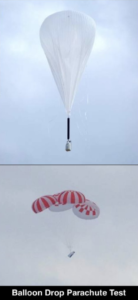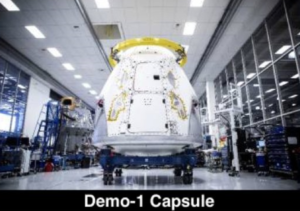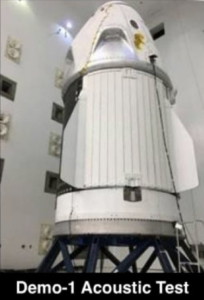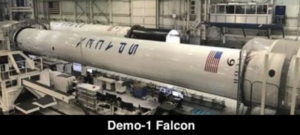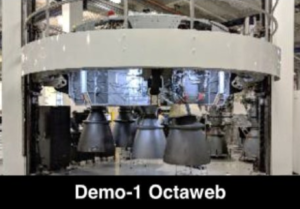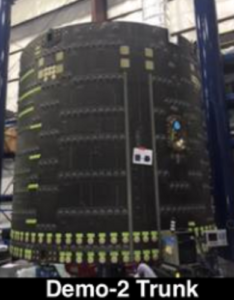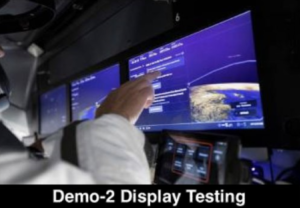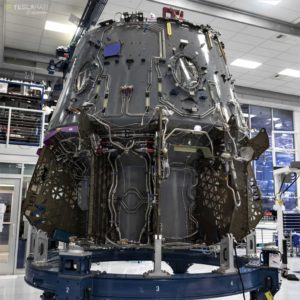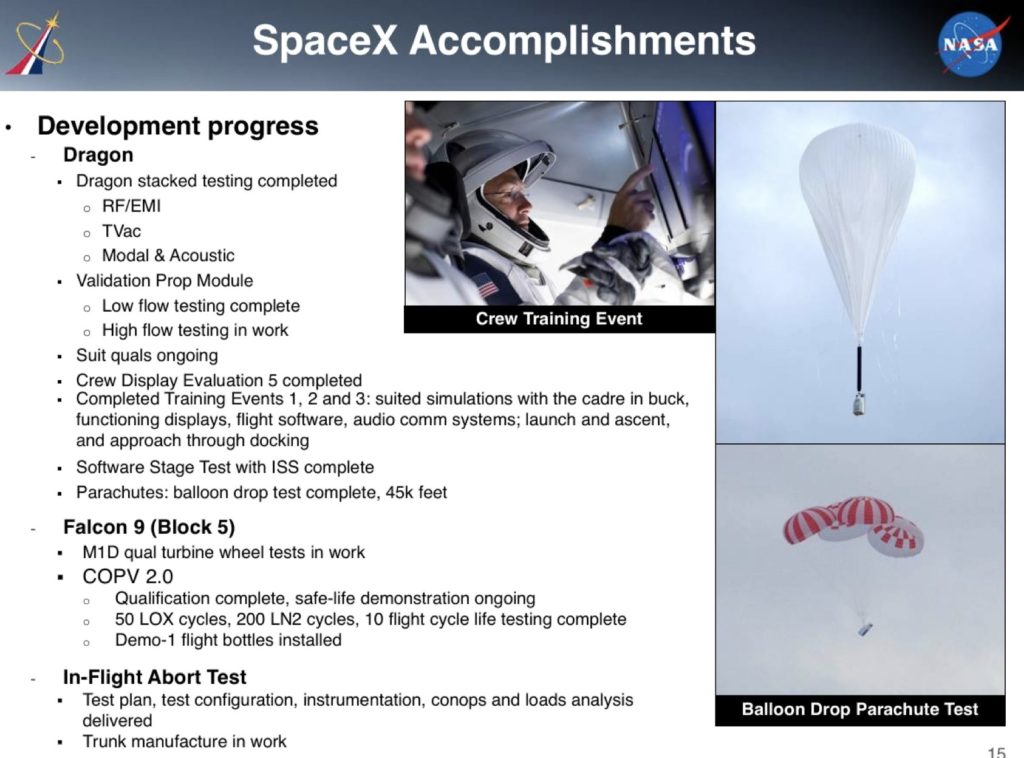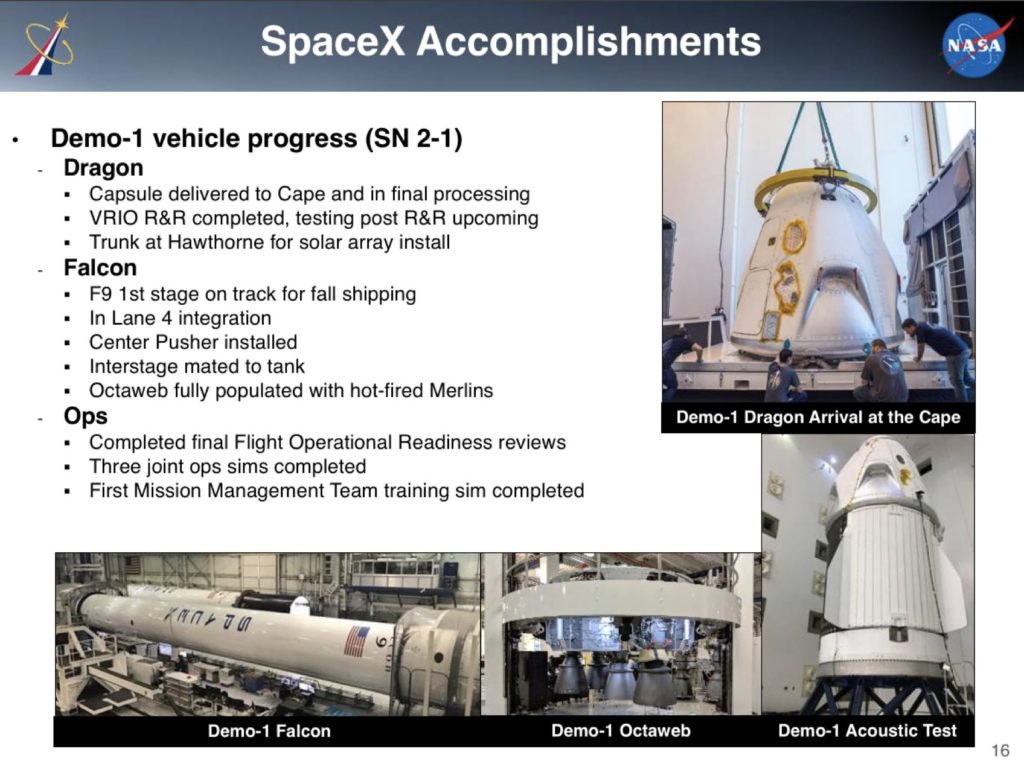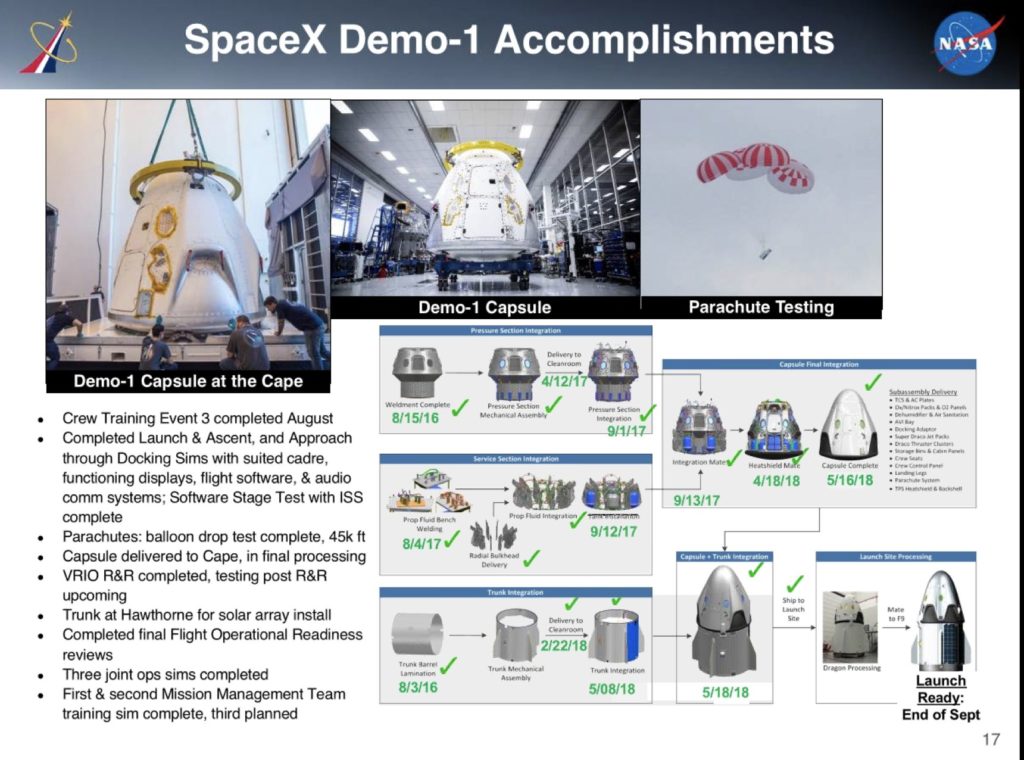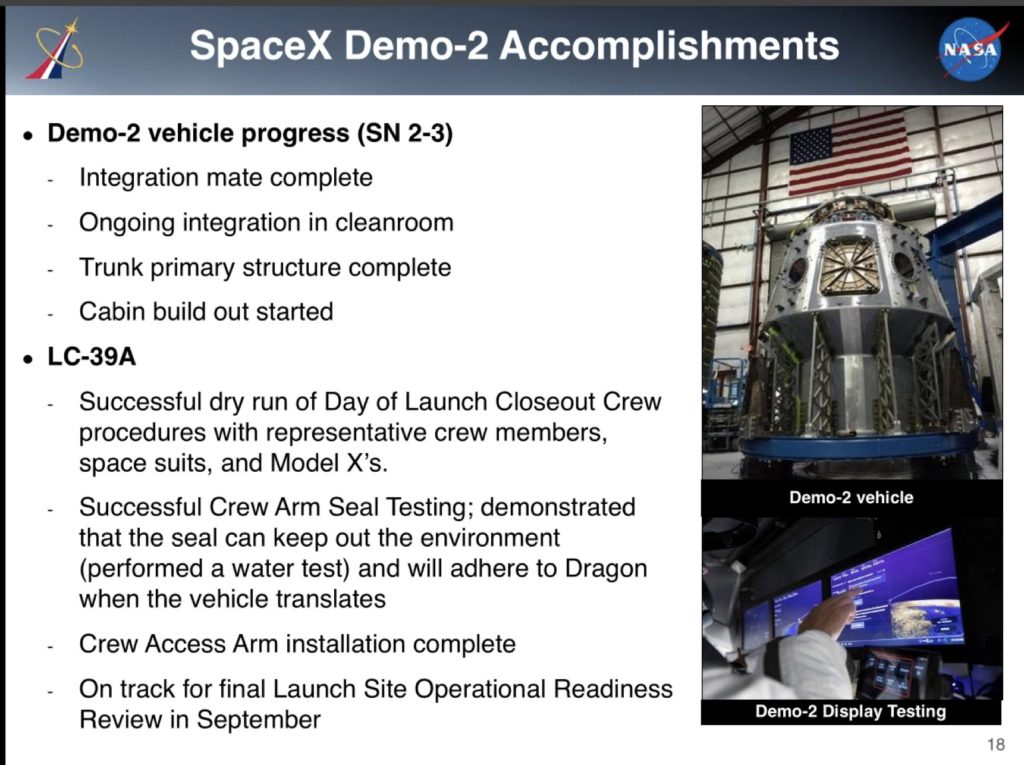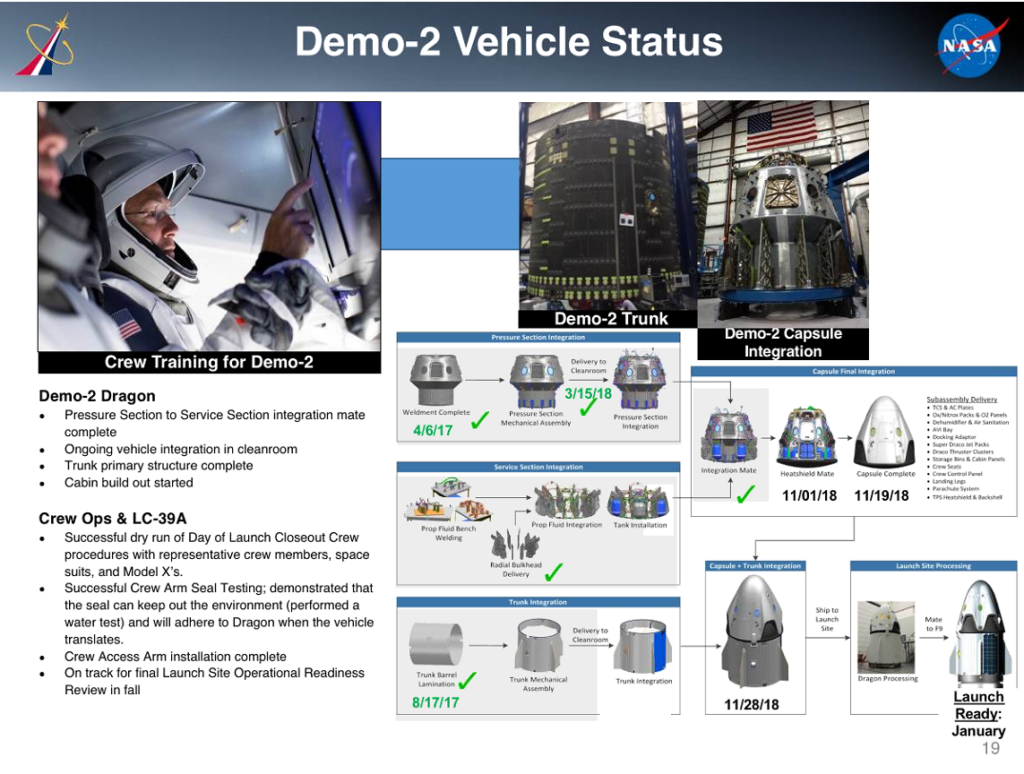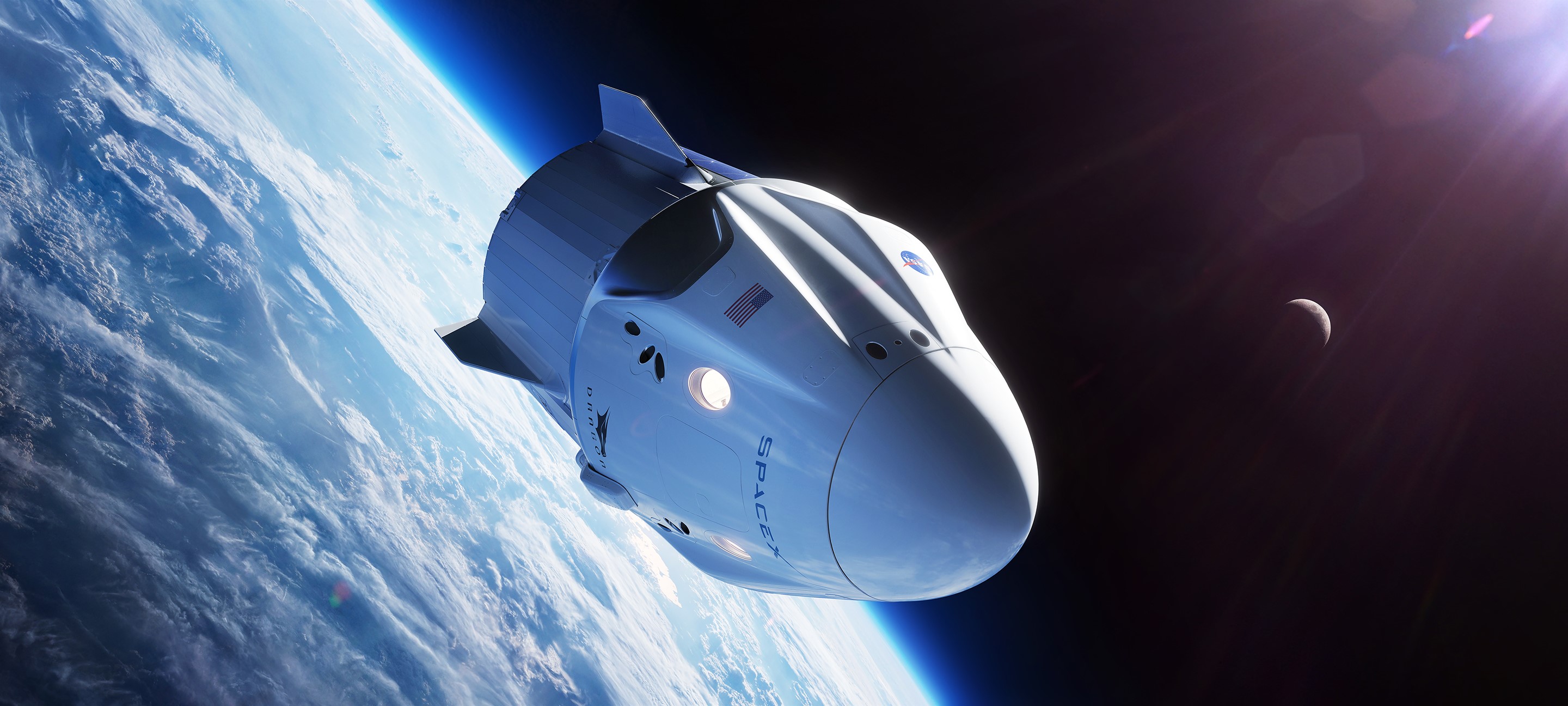

SpaceX
SpaceX’s Crew Dragon and Falcon 9 Block 5 rocket are almost ready for astronauts
In a Commercial Crew update presented by Program Manager Kathy Lueders to the NASA Advisory Council (NAC), the agency has confirmed that SpaceX is deep into the final stages of hardware preparation and testing ahead of their first uncrewed and crewed demonstrations launches of Crew Dragon.
Barring a miracle for Commercial Crew Program partner Boeing’s Starliner spacecraft program or serious faults leading up to SpaceX’s own debuts, SpaceX is all but guaranteed to become the first private company in history to design, build, and launch a spacecraft into Earth orbit with real astronauts onboard.
PICTURE OF B1051!!! It will ship to the Cape from McGregor soon.
Solar panel array on the trunk for the DM-1 capsule will take place in Hawthorne. pic.twitter.com/K82GANn5zr
— Michael Baylor (@MichaelBaylor_) August 27, 2018
SpaceX’s DM-1 Crew Dragon (serial number C201; “C” for capsule, “2” for Dragon 2, and “01” for capsule #1) capsule is already in Florida at one of the company’s spacecraft processing facilities, while that vehicle’s trunk segment – a module mounted below the capsule responsible for providing power (solar arrays), thermal regulation (radiator panels), and external cargo lift capacity – is scheduled to ship from Hawthorne, CA to Florida by the end of September. Demonstration Mission-1 (DM-1) is currently targeting a launch debut no earlier than November 2018.
DM-1’s Falcon 9 launch vehicle, booster B1051 and an expendable second stage, are also making significant progress towards the Crew Dragon’s uncrewed debut launch. NASA’s report noted that B1051 was on track for shipment (presumably to the Cape) sometime in the fall (technically anytime after August 31st) and that the upper stage would likely find its way to Florida soon after, sometime in September. Due to the fact that Merlin Vacuum engine qualification has not yet been completed, that milestone is likely the only thing standing between S2 shipment to FL, as SpaceX typically builds and tests both Falcon 9 segments near-simultaneously.
- One of the aforementioned balloon-drop parachute tests. (SpaceX)
- The DM-1 Crew Dragon capsule soon after completion. (SpaceX)
- DM-1 seen conducting acoustic testing in Ohio. (SpaceX)
- Falcon 9 B1051, DM-1’s rocket of choice, seen during construction in SpaceX’s Hawthorne factory. (SpaceX)
- B1051’s octaweb, the structure that Merlin engines attach to and thrust against. (SpaceX)
- The DM-2 Crew Dragon’s trunk module seen during production. (SpaceX)
- Crew Dragon astronauts test the capsule’s display controls. (SpaceX)
- SpaceX Crew Dragon capsule C203 – then assigned DM-2 – is seen here in August 2018. (Pauline Acalin)
Meanwhile, SpaceX has successfully completed a duo of unique and critical tests of Crew Dragon’s parachute systems, carrying a Crew Dragon mass simulator (i.e. boilerplate) up to 45,000 feet (13,700 m) under a huge balloon before dropping the mockup, a test series designed to prove out the ability of the parachute system to successfully deploy and function in the exact flight regimes the real hardware will experience while safely returning astronauts to Earth. As NASA Commercial Crew Program Manager Kathy Lueders herself noted, that type of testing is extremely difficult to pull off, but SpaceX has thus far completed two.
On the launch pad side of things, SpaceX will be exclusively conducting Crew Dragon missions from Pad 39A. The company completed installation of a strikingly modern-looking crew access arm (CAA) just days ago, marking a crucial milestone for the historic launch complex to be truly ready to support human spaceflight once more, a heritage represented physically by the tower the arm is installed on (Shuttle-era) and the pad’s foundation and thrust diverter (constructed to support Saturn V’s Apollo moon missions).
That’s right provided the two Crew Dragon test flights go well. Hardware will def be ready. https://t.co/KcAFArYn1x
— Elon Musk (@elonmusk) August 6, 2018
Further down the road, SpaceX has already entered into the late stages of hardware integration and preparation for the second Crew Dragon demonstration mission (DM-2), which will almost without a doubt see SpaceX become the first private entity in history to build, launch, and operate a crewed spacecraft in Earth orbit.
According to NASA’s SpaceX-derived schedule, that particularly historic spacecraft is expected to be ready for launch as early as January, a full three months prior to its current April 2018 launch date. CEO Elon Musk did note recently on Twitter that the hardware for both crewed and uncrewed demonstration missions would “def[initely] be ready” for the launch dates of November 2018 and April 2019.
Catch all the technical SpaceX-related slides below.
- August 27, 2018. (NASA)
- August 27, 2018. (NASA)
- August 27, 2018. (NASA)
- August 27, 2018. (NASA)
- August 27, 2018. (NASA)
For prompt updates, on-the-ground perspectives, and unique glimpses of SpaceX’s rocket recovery fleet check out our brand new LaunchPad and LandingZone newsletters!
News
SpaceX launches Ax-4 mission to the ISS with international crew
The SpaceX Falcon 9 launched Axiom’s Ax-4 mission to ISS. Ax-4 crew will conduct 60+ science experiments during a 14-day stay on the ISS.

SpaceX launched the Falcon 9 rocket kickstarting Axiom Space’s Ax-4 mission to the International Space Station (ISS). Axiom’s Ax-4 mission is led by a historic international crew and lifted off from Kennedy Space Center’s Launch Complex 39A at 2:31 a.m. ET on June 25, 2025.
The Ax-4 crew is set to dock with the ISS around 7 a.m. ET on Thursday, June 26, 2025. Axiom Space, a Houston-based commercial space company, coordinated the mission with SpaceX for transportation and NASA for ISS access, with support from the European Space Agency and the astronauts’ governments.
The Ax-4 mission marks a milestone in global space collaboration. The Ax-4 crew, commanded by U.S. astronaut Peggy Whitson, includes Shubhanshu Shukla from India as the pilot, alongside mission specialists Sławosz Uznański-Wiśniewski from Poland and Tibor Kapu from Hungary.
“The trip marks the return to human spaceflight for those countries — their first government-sponsored flights in more than 40 years,” Axiom noted.
Shukla’s participation aligns with India’s Gaganyaan program planned for 2027. He is the first Indian astronaut to visit the ISS since Rakesh Sharma in 1984.
Axiom’s Ax-4 mission marks SpaceX’s 18th human spaceflight. The mission employs a Crew Dragon capsule atop a Falcon 9 rocket, designed with a launch escape system and “two-fault tolerant” for enhanced safety. The Axiom mission faced a few delays due to weather, a Falcon 9 leak, and an ISS Zvezda module leak investigation by NASA and Roscosmos before the recent successful launch.
As the crew prepares to execute its scientific objectives, SpaceX’s Ax-4 mission paves the way for a new era of inclusive space research, inspiring future generations and solidifying collaborative ties in the cosmos. During the Ax-4 crew’s 14-day stay in the ISS, the astronauts will conduct nearly 60 experiments.
“We’ll be conducting research that spans biology, material, and physical sciences as well as technology demonstrations,” said Whitson. “We’ll also be engaging with students around the world, sharing our experience and inspiring the next generation of explorers.”
SpaceX’s Ax-4 mission highlights Axiom’s role in advancing commercial spaceflight and fostering international partnerships. The mission strengthens global space exploration efforts by enabling historic spaceflight returns for India, Poland, and Hungary.
News
Starlink Cellular’s T-Mobile service to grow with third-party app data
From Oct 2025, T-Satellite will enable third-party apps in dead zones! WhatsApp, X, AccuWeather + more coming soon.

Starlink Cellular’s T-Mobile service will expand with third-party app data support starting in October, enhancing connectivity in cellular dead zones.
T-Mobile’s T-Satellite, supported by Starlink, launches officially on July 23. Following its launch, T-Mobile’s Starlink Cellular service will enable data access for third-party apps like WhatsApp, X, Google, Apple, AccuWeather, and AllTrails on October 1, 2025.
T-Mobile’s Starlink Cellular is currently in free beta. T-Satellite will add MMS support for Android phones on July 23, with iPhone support to follow. MMS support allows users to send images and audio clips alongside texts. By October, T-Mobile will extend emergency texting to all mobile users with compatible phones, beyond just T-Mobile customers, building on its existing 911 texting capability. The carrier also provides developer tools to help app makers integrate their software with T-Satellite’s data service, with plans to grow the supported app list.
T-Mobile announced these updates during an event celebrating an Ookla award naming it the best U.S. phone network, a remarkable turnaround from its last-place ranking a decade ago.
“We not only dream about going from worst to best, we actually do it. We’re a good two years ahead of Verizon and AT&T, and I believe that lead is going to grow,” said T-Mobile’s Chief Operating Officer Srini Gopalan.
T-Mobile unveiled two promotions for its Starlink Cellular services to attract new subscribers. A free DoorDash DashPass membership, valued at $10/month, will be included with popular plans like Experience Beyond and Experience More, offering reduced delivery and service fees. Meanwhile, the Easy Upgrade promotion targets Verizon customers by paying off their phone balances and providing flagship devices like the iPhone 16, Galaxy S25, or Pixel 9.
T-Mobile’s collaboration with SpaceX’s Starlink Cellular leverages orbiting satellites to deliver connectivity where traditional networks fail, particularly in remote areas. Supporting third-party apps underscores T-Mobile’s commitment to enhancing user experiences through innovative partnerships. As T-Satellite’s capabilities grow, including broader app integration and emergency access, T-Mobile is poised to strengthen its lead in the U.S. wireless market.
By combining Starlink’s satellite technology with strategic promotions, T-Mobile is redefining mobile connectivity. The upcoming third-party app data support and official T-Satellite launch mark a significant step toward seamless communication, positioning T-Mobile as a trailblazer in next-generation wireless services.
News
Starlink expansion into Vietnam targets the healthcare sector
Starlink aims to deliver reliable internet to Vietnam’s remote clinics, enabling telehealth and data sharing.

SpaceX’s Starlink expansion into Vietnam targets its healthcare sector. Through Starlink, SpaceX seeks to drive digital transformation in Vietnam.
On June 18, a SpaceX delegation met with Vietnam’s Ministry of Health (MoH) in Hanoi. SpaceX’s delegation was led by Andrew Matlock, Director of Enterprise Sales, and the discussions focused on enhancing connectivity for hospitals and clinics in Vietnam’s remote areas.
Deputy Minister of Health (MoH) Tran Van Thuan emphasized collaboration between SpaceX and Vietnam. Tran stated: “SpaceX should cooperate with the MoH to ensure all hospitals and clinics in remote areas are connected to the StarLink satellite system and share information, plans, and the issues discussed by members of the MoH. The ministry is also ready to provide information and send staff to work with the corporation.”
The MoH assigned its Department of Science, Technology, and Training to work with SpaceX. Starlink Vietnam will also receive support from Vietnam’s Department of International Cooperation. Starlink Vietnam’s agenda includes improving internet connectivity for remote healthcare facilities, developing digital infrastructure for health examinations and remote consultations, and enhancing operational systems.
Vietnam’s health sector is prioritizing IT and digital transformation, focusing on electronic health records, data centers, and remote medical services. However, challenges persist in deploying IT solutions in remote regions, prompting Vietnam to seek partnerships like SpaceX’s.
SpaceX’s Starlink has a proven track record in healthcare. In Rwanda, its services supported 40 health centers, earning praise for improving operations. Similarly, Starlink enabled remote consultations at the UAE’s Emirati field hospital in Gaza, streamlining communication for complex medical cases. These successes highlight Starlink’s potential to transform Vietnam’s healthcare landscape.
On May 20, SpaceX met with Vietnam’s Ministry of Industry and Trade, announcing a $1.5 billion investment to provide broadband internet, particularly in remote, border, and island areas. The first phase includes building 10-15 ground stations across the country. This infrastructure will support Starlink’s healthcare initiatives by ensuring reliable connectivity.
Starlink’s expansion in Vietnam aligns with the country’s push for digital transformation, as outlined by the MoH. By leveraging its satellite internet expertise, SpaceX aims to bridge connectivity gaps, enabling advanced healthcare services in underserved regions. This collaboration could redefine Vietnam’s healthcare infrastructure, positioning Starlink as a key player in the nation’s digital future.
-

 Elon Musk5 days ago
Elon Musk5 days agoTesla investors will be shocked by Jim Cramer’s latest assessment
-

 News1 week ago
News1 week agoTesla Robotaxi’s biggest challenge seems to be this one thing
-

 Elon Musk2 weeks ago
Elon Musk2 weeks agoFirst Look at Tesla’s Robotaxi App: features, design, and more
-

 News2 weeks ago
News2 weeks agoWatch Tesla’s first driverless public Robotaxi rides in Texas
-

 News2 weeks ago
News2 weeks agoWatch the first true Tesla Robotaxi intervention by safety monitor
-

 Elon Musk2 weeks ago
Elon Musk2 weeks agoTesla to launch in India in July with vehicles already arriving: report
-
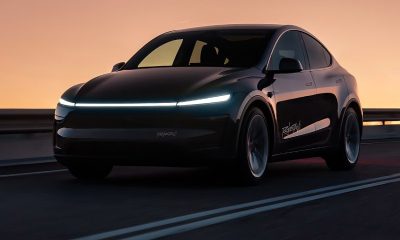
 Elon Musk2 weeks ago
Elon Musk2 weeks agoTesla officially launches Robotaxi service with no driver
-

 Elon Musk1 week ago
Elon Musk1 week agoA Tesla just delivered itself to a customer autonomously, Elon Musk confirms

